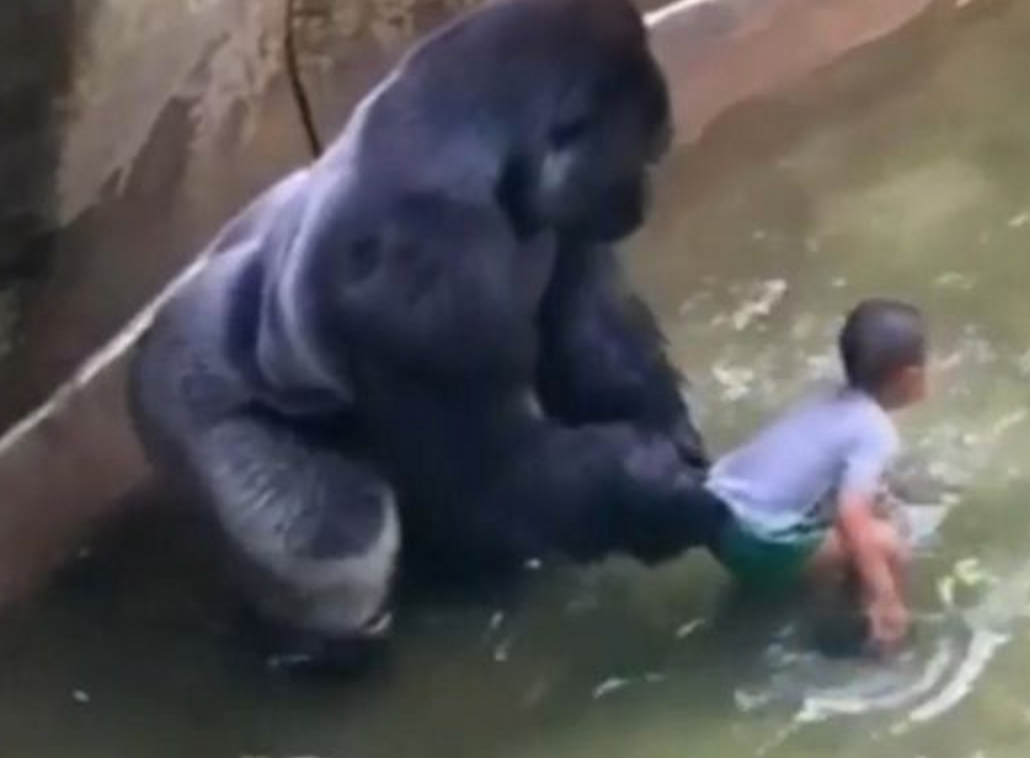The only thing more upsetting than Harambe the gorilla's death was the reality of his life
Surely we can begin to agree that animals which share 98 per cent of our DNA should not be kept as entertainment for us to gawk at in a zoo


Your support helps us to tell the story
From reproductive rights to climate change to Big Tech, The Independent is on the ground when the story is developing. Whether it's investigating the financials of Elon Musk's pro-Trump PAC or producing our latest documentary, 'The A Word', which shines a light on the American women fighting for reproductive rights, we know how important it is to parse out the facts from the messaging.
At such a critical moment in US history, we need reporters on the ground. Your donation allows us to keep sending journalists to speak to both sides of the story.
The Independent is trusted by Americans across the entire political spectrum. And unlike many other quality news outlets, we choose not to lock Americans out of our reporting and analysis with paywalls. We believe quality journalism should be available to everyone, paid for by those who can afford it.
Your support makes all the difference.Yet again, captivity has taken an animal's life. The latest victim: a 17-year-old gorilla named Harambe, who was gunned down after a young boy managed to crawl through a fence before falling into his enclosure at the Cincinnati Zoo.
The incident (which could have been prevented by surrounding the enclosure with a secondary barrier) has generated a great deal of debate online, some extreme – one tweet said, "[I]f you have to shoot – aim for the least endangered one," while an Express columnist took the view that "zoo staff did what you might think all people would want: they put the human life first". But arguing over whose life is more valuable misses the point. What we should be asking is why intelligent, self-aware animals are still being displayed as living exhibits for humans to gawk at.
Harambe and other animals serving life sentences in zoos are leading lives of quiet desperation. They are denied the most basic freedoms, including being able to choose where to roam, when and what to eat, and whom to socialise with. It's no wonder that these magnificent animals frequently exhibit signs of extreme depression and related psychological conditions, such as pacing, rocking and eating their own vomit, which is unheard of in their wild counterparts, as they struggle with the confines of their captivity. They're also prone to cardiac disease: in 2011, the Smithsonian Institution revealed that 30 of its gorillas were on heart medication.
Zoos try to justify their existence in the name of "conservation", but warehousing animals in these facilities does nothing to help protect endangered animals in the wild. In fact, some say doing so actually harms wild populations because it diverts much-needed funds away from the protection of animals in their natural habitats.
After all, capturing (yes, some zoos still snatch animals out of their natural habitats), transporting and maintaining non-human animals for the professed purpose of "conserving" them is enormously expensive. It costs about 50 times as much to keep one African elephant in a zoo as it would to safeguard sufficient natural habitat to sustain that elephant and countless others.
When, in 2007, the Zoological Society of London spent £5.3m on a new gorilla enclosure, Ian Redmond, the chief consultant to the UN Great Apes Survival Partnership, said: "£5m for three gorillas [seems a huge amount] when national parks are seeing [three gorillas] killed every day for want of some Land Rovers, trained men and anti-poaching patrols. It must be very frustrating for the warden of a national park to see". Clearly, the same amount of money a zoo spends on buying expensive animals could benefit so many more of the same animals living in the wild. Our need for entertainment is expensive, unnecessary and without discernible benefit, then, to the animals involved.
While zoos spend millions on keeping animals in captivity, wild animals continue to experience habitat destruction and poaching. Virtually none of the captive-bred species that do face extinction in the wild – including gorillas, elephants, polar bears, gorillas, tigers, chimpanzees and pandas – will ever be released back into their natural environments to bolster dwindling populations. The truth is that most zoos have no contact of any kind with reintroduction programmes.
Perhaps the only thing more tragic than Harambe's death was his life. While the debate about whether Cincinnati Zoo should have killed him or not rages on, surely we can all agree that animals deserve better than a life sentence in a zoo.
Join our commenting forum
Join thought-provoking conversations, follow other Independent readers and see their replies
Comments